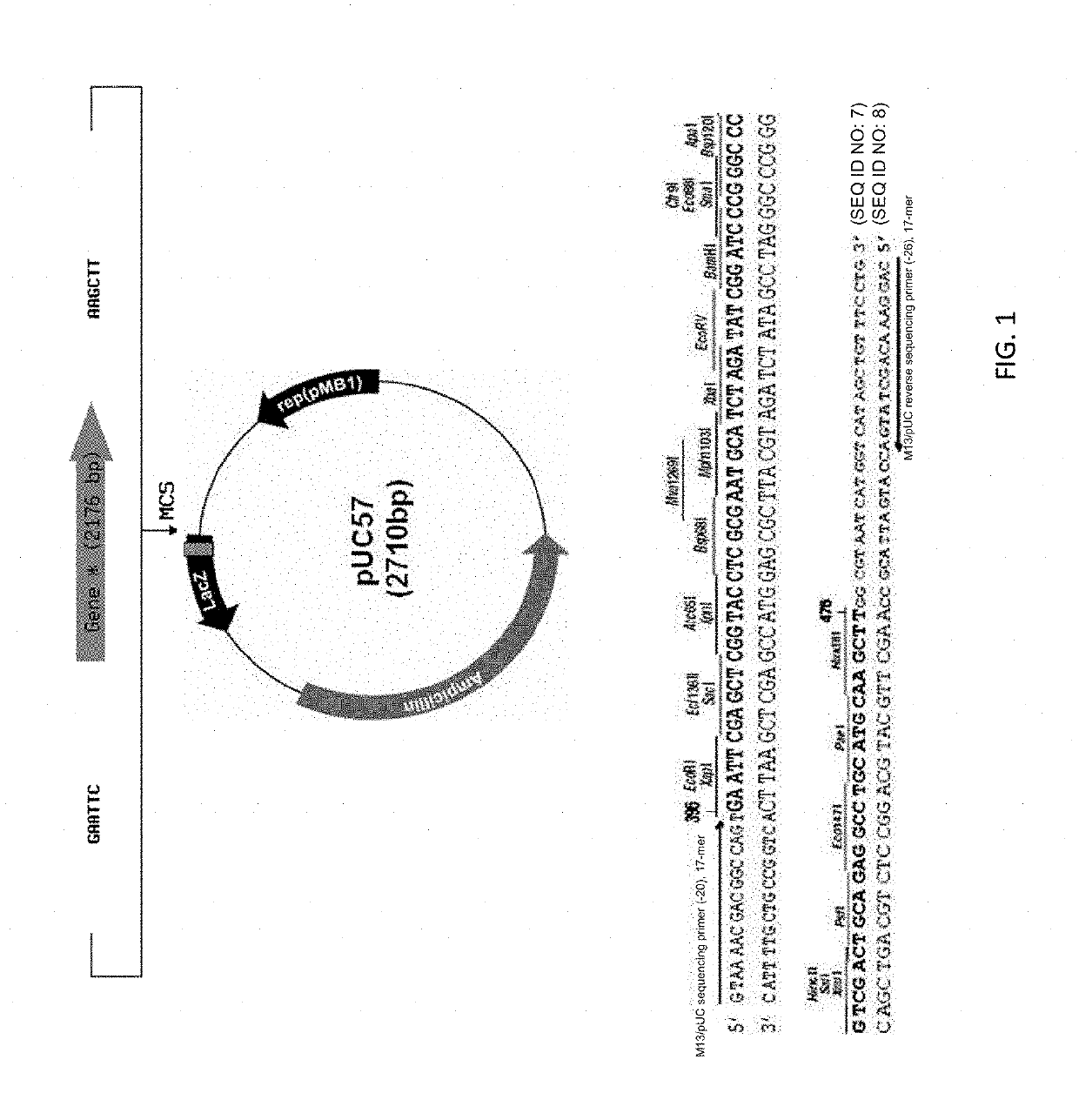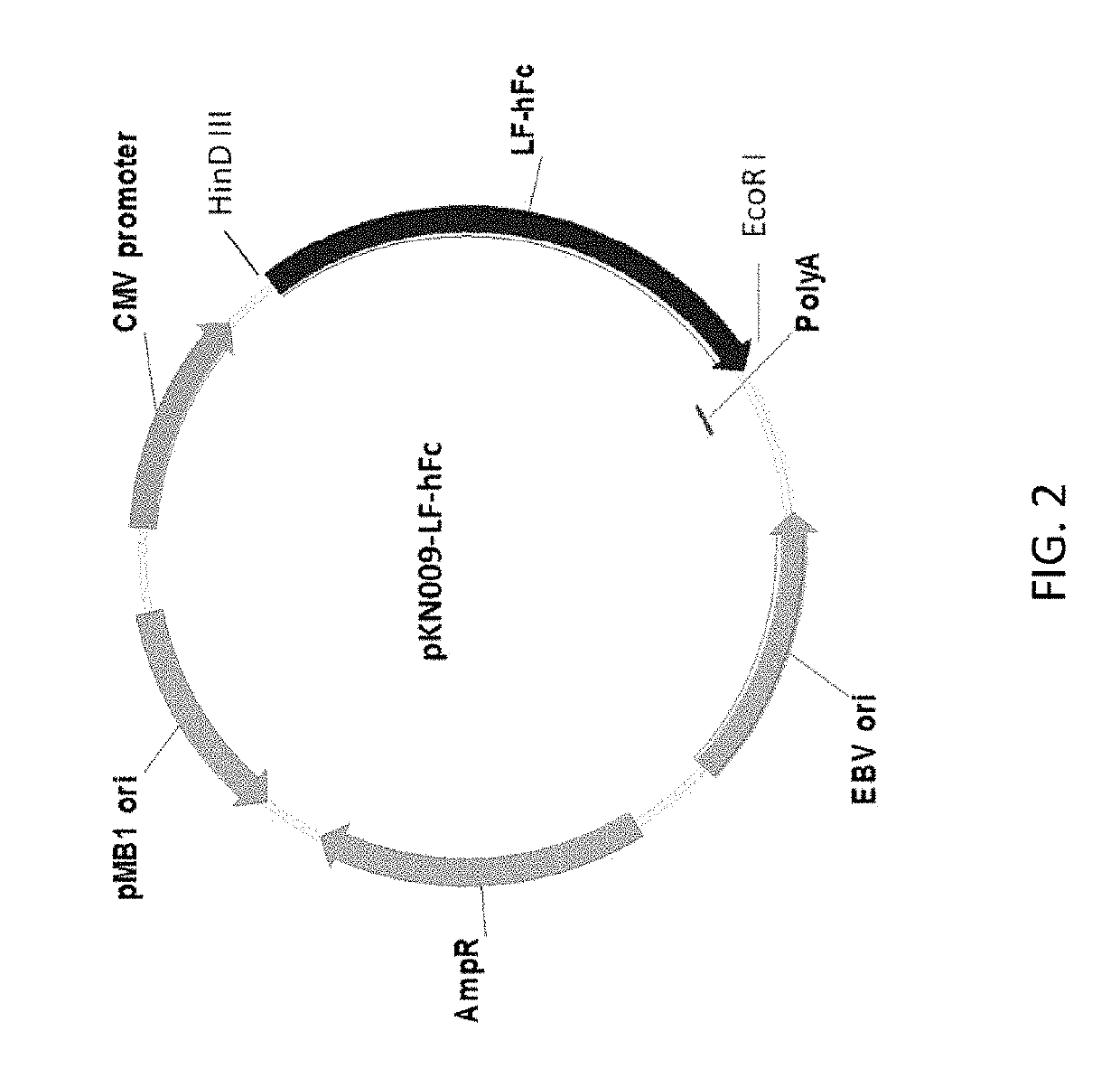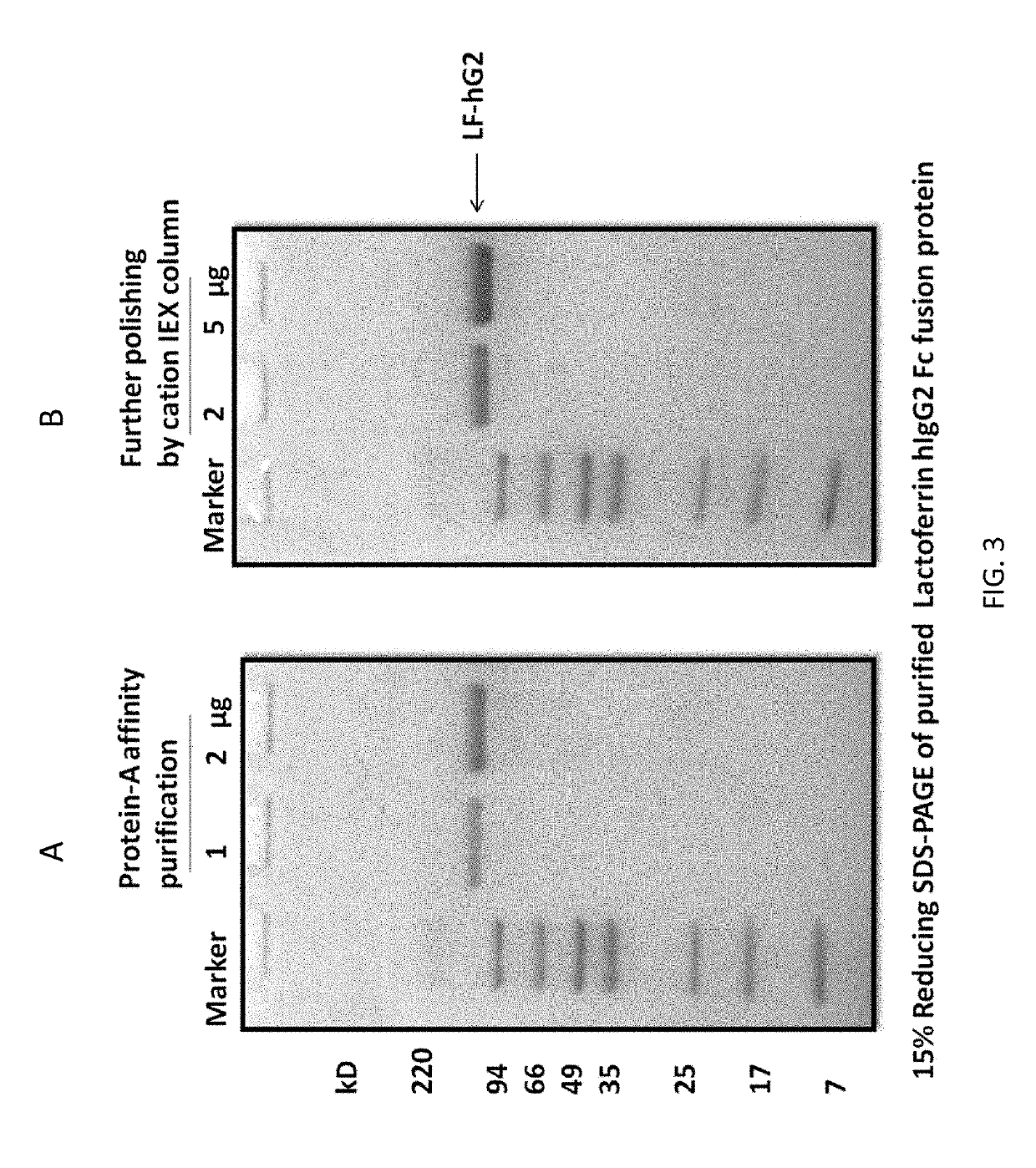Methods and compositions for treatment of symptoms associated with intracranial hemorrhage
a technology of intracranial hemorrhage and composition, which is applied in the direction of drug compositions, peptide/protein ingredients, transferrins, etc., can solve the problems of hemolytic product toxicities, blood brain barrier disruption, pro-inflammatory responses, etc., to improve cognitive processes, prevent intracranial hemorrhage, and reduce neutrophil infiltration
- Summary
- Abstract
- Description
- Claims
- Application Information
AI Technical Summary
Benefits of technology
Problems solved by technology
Method used
Image
Examples
example 1
[0110]Production and purification of lactoferrin-higg2-fc fusion protein (LTF-hIgG2-Fc: PRC14): The production of human LTF-human IgG2 Fc fusion protein (LTF-hIgG2-Fc) in CHO DG44 cells using serum free medium, followed by two-step purification, endotoxin removal and lyophilization. Construction of LTF-fusion protein (PRC14): A LTF-hIgG2-Fc fusion construct was generated through overlap PCR and further subcloned into a stable expression plasmid for transfection of CHO-DG44 cells using Freestyle max reagent (Invitrogen, Cat. No 16447, CA USA) (FIG. 1). The transfected CHO-DG44 cells were cultured in 96-well plates with methionine sulphoximine (MSX) selection medium, and the best expressing clone was expanded to 24-well plates, T-25 flask and finally scale up into shaker flask system for production of initial quantities of the LTF-hIgG2-Fc fusion protein. The media, containing LTF-IgG Fc fusion protein, was harvested, centrifuged and then applied to Mabselect Sure (GE) protein-A affin...
example 2
[0115]In vitro evidence supporting the use of lactoferrin to treat intracerebral hemorrhage (ICH) related symptoms. To establish the ability of rhLTF to enhance brain cell survival in response to hemolytic product, an in vitro “ICH-like” injury model was utilized. This model is based on adding RBC-lysate to the primary neuronal-glial co-cultures (a mixed brain cell culture consisting of neurons, astrocytes, oligodendrocytes and microglia). As expected, RBC-lysate caused an injury to neurons (swelling of the soma and dendrites, followed by lyses) and remarkably it was determined that physiologically relevant concentration of LTF (rhLTF) (10 μg / ml) strongly reduced the neuronal damage caused by hemolysates (more NeuN-positive cells survived) (as shown in FIG. 6).
[0116]To characterize the effect of LTF on the function and phenotype of microglia / macrophage (MMΦ), rhLTF was added to the cultured rat primary MMΦ with or without ANs (apoptotic PMNs; target of efferocytosis-phagocytosis of ...
example 3
[0117]Treatment with LTF. Autologous blood injection model of ICH in rodents: A clinically-relevant ICH model in mouse that is based on intra-striatal injection of autologous blood (see for example 71, 72, 79). In summary, randomly selected male mice (weighing˜30 g) under isoflurane anesthesia were immobilized onto a stereotaxic frame. A burr hole was drilled in the skull and a 31 gauge steel cannula was inserted for the whole fresh blood (12 μl; from the femoral artery) infusion. The core body temperature was maintained at 37±0.5° C. during surgery and the first 3 hours after surgery.
[0118]Analysis of motor dysfunction: All sensorimotor testing was performed during the light cycle. Animals were pre-tested. A battery of sensorimotor tests was used. These tests are sensitive to damage produced by ICH and ischemia in this model and have been used successfully in the inventors' laboratory for two decades. Five functional outcomes (adhesive removal test, forelimb placing test, cylinder ...
PUM
| Property | Measurement | Unit |
|---|---|---|
| pH | aaaaa | aaaaa |
| concentration | aaaaa | aaaaa |
| temperature | aaaaa | aaaaa |
Abstract
Description
Claims
Application Information
 Login to View More
Login to View More - R&D
- Intellectual Property
- Life Sciences
- Materials
- Tech Scout
- Unparalleled Data Quality
- Higher Quality Content
- 60% Fewer Hallucinations
Browse by: Latest US Patents, China's latest patents, Technical Efficacy Thesaurus, Application Domain, Technology Topic, Popular Technical Reports.
© 2025 PatSnap. All rights reserved.Legal|Privacy policy|Modern Slavery Act Transparency Statement|Sitemap|About US| Contact US: help@patsnap.com



